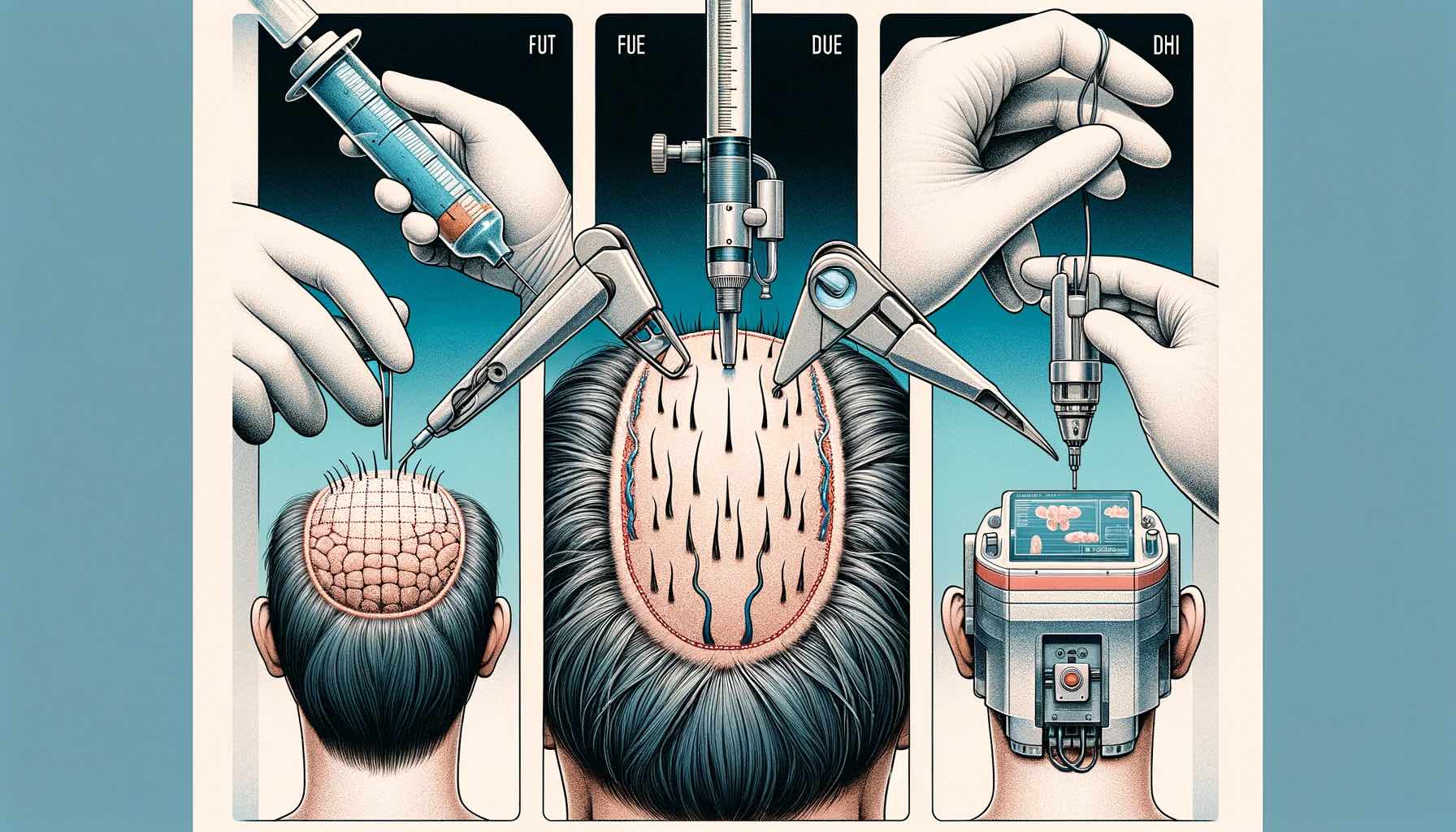Types of Hair Transplantation

Hair loss can be a distressing experience, affecting not just your appearance but also your self-esteem. Fortunately, advances in medical science have made hair restoration more accessible and effective than ever before. Among these solutions, hair transplantation stands out as a popular choice for those looking to regain a fuller head of hair. This blog post explores the various types of hair transplantation techniques, helping you understand your options.
Understanding Hair Transplantation
Hair transplantation is a surgical procedure that involves moving hair follicles from a part of the body, known as the donor site, to the bald or balding part, known as the recipient site. It’s primarily used to treat male pattern baldness but is also effective for women and in restoring hair on other parts of the body.
Types of Hair Transplantation Procedures
1. Follicular Unit Transplantation (FUT)
FUT, also known as strip surgery, involves removing a strip of skin from the donor area (usually the back of the head) under local anesthesia. The strip is then dissected into individual follicular units, which are transplanted to the recipient area.
- Pros: Allows for a large number of grafts to be transplanted in a single session.
- Cons: Leaves a linear scar in the donor area which can be covered with the surrounding hair.
2. Follicular Unit Extraction (FUE)
FUE involves extracting individual hair follicles directly from the scalp using a small punch tool and transplanting them to the balding areas.
- Pros: Minimizes scarring, allowing patients to wear their hair short post-surgery.
- Cons: The procedure is more time-consuming and may require multiple sessions for extensive coverage.
3. Direct Hair Implantation (DHI)
DHI is a variation of the FUE technique that uses a special pen-like instrument to extract and implant hair follicles simultaneously, providing more control over the depth, direction, and angle of implantation.
- Pros: Offers a natural-looking result and high follicle viability.
- Cons: Requires high precision and skill, often resulting in a longer procedure and higher cost.
4. Robotic Hair Transplantation
Utilizes robotic technology to automate the FUE process, improving the accuracy and speed of follicle extraction.
- Pros: Reduces human error and decreases the time required for the procedure.
- Cons: The high cost of the technology may be reflected in the overall cost of the procedure.
Choosing the Right Procedure
The best hair transplantation technique for you depends on several factors, including the extent of your hair loss, the density of your donor hair, your scalp’s flexibility, and your personal preferences regarding recovery time and scarring. It’s essential to consult with a qualified hair restoration specialist who can evaluate your situation and recommend the most suitable approach.
Most hair transplantation procedures, including FUT, FUE, and DHI, are performed under local anesthesia to minimize pain during the procedure. Patients may experience some discomfort post-surgery, but FUE and DHI are generally considered to have a less painful recovery due to the minimally invasive nature of these techniques.
The best technique for your hair transplantation depends on several factors, including the extent of hair loss, hair density at the donor site, your lifestyle, and your recovery time preference. A consultation with a skilled hair restoration specialist can help determine the most suitable method based on your specific needs and goals.
The main difference lies in how the hair follicles are harvested. FUT involves removing a strip of scalp from the donor area and then extracting individual follicles, which leaves a linear scar. FUE extracts individual hair follicles directly from the scalp, resulting in minimal scarring and a shorter recovery time.
DHI, or Direct Hair Implantation, uses a precise pen-like instrument to implant hair follicles, allowing for better control over the depth, direction, and angle of each follicle. This precision can lead to a more natural-looking hairline and density compared to other techniques.
Robotic hair transplantation automates the follicle extraction process, potentially increasing accuracy and efficiency. While it offers advantages, especially in large sessions, the superiority of robotic vs. manual methods depends on the specific case and the surgeon’s expertise.
FUT usually requires a longer recovery time due to the surgical removal of a scalp strip, with patients needing to limit physical activity for several weeks. FUE offers a quicker recovery, with most patients resuming normal activities within a few days to a week.
DHI procedures can take longer than FUE and FUT due to the detailed and precise nature of the technique. The exact duration depends on the number of follicles being transplanted but expect DHI sessions to extend beyond the typical 4-8 hours seen in FUE and FUT procedures for comparable coverage.
Conclusion
Hair transplantation offers a promising solution for those struggling with hair loss, with various techniques catering to different needs and expectations. By understanding the options available, you can make an informed decision and take the first step towards restoring not just your hair, but also your confidence.
Contact Information
- WhatsApp: +90 541 469 11 94
- Email: [email protected]
We connect you with top medical specialists and provide comprehensive support to optimize your healthcare decisions. Empowering you to make informed choices for a healthier future.
Get a Medical Opinion
Fill out the form and we will contact you shortly.